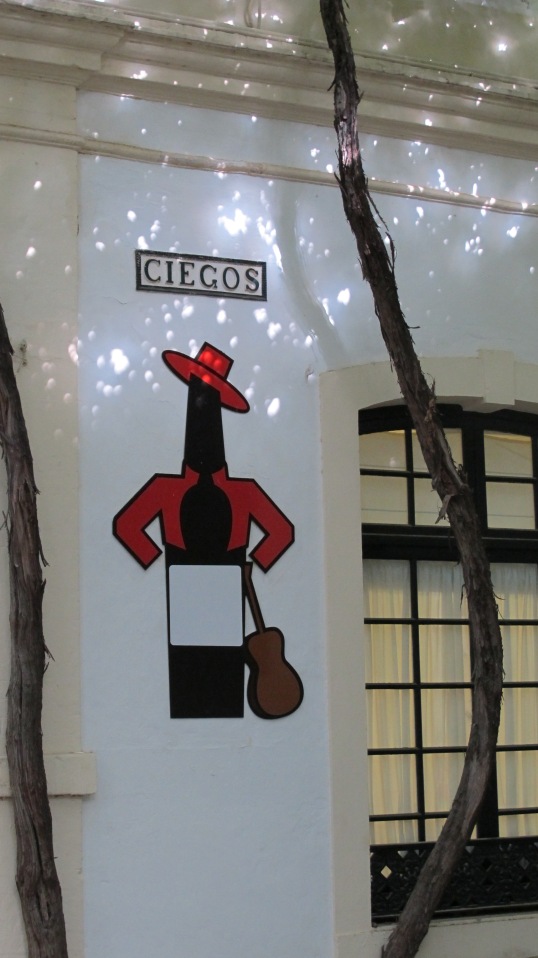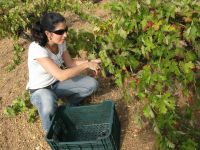Sherrymaster: getting to love sherry
En un ejercicio de no movilidad geográfica pero sí lingüística, y dado que este es mi blog y hago lo que quiero, me permito publicar un post en inglés, versión de un artículo que he publicado en Sobremesa en lengua española. El Sherrymaster fue toda una experiencia, y este texto no es más que un ejercicio de escritura, sin pretensiones. Pero como, gracias a la colaboración de Paul Wagner y su esposa, que me echaron una mano con la edición, ha quedado un texto «mu potito» lo coloco aquí.
I hope you like it!
Last September 5th and 6th, González Byass in Jerez, better known as Tío Pepe, conducted the first professional encounter about sherry wines, Sherrymaster, which brought together sommeliers and wine writers in the city.
For two full days, and with the winemaker from the winery, Antonio Flores, leading the group, this event was dedicated to developing a deeper knowledge of sherry wines, starting with the vineyard and ending with sweet wines. The lessons were based on specific tastings, with the participation, besides Flores and his cellar team, of the Celler de Can Roca sommelier, Josep Roca, and Sarah Jane Evans MW, as guests of honor.
The Sherrymaster started up at a sherry vineyard, La Canariera estate, where Antonio Flores and the vineyard manager, Salvador Guimera, explained the particularities of the albariza soils and the palomino grape, predominant in the region. They also showed those attending how the “aserpia” is done. This is a field labor that consists in digging holes by the vineyard to help retain water and control erosion. They also explained the “soleado,” the spreading out of the palomino and px grapes to expose them to the sun, so they can be used to make sweet wines.
This was followed by a visit to the archive that Gonzalez Byass has been organizing for years, cataloguing pictures, labels and internal winery documents to show to the public that visit the facilities. Among them you can find, for example, a handwritten letter showing when, for the first time, a “very very pale” wine is referred to. Eleven years later, this wine would be known as “Fino Tío Pepe.”
Tasting sessions started with the so-called “Cata en uve” (V-tasting), so named because of the shape formed by the arrangement of the glasses. This demonstrated, at a single glance, how from only one young wine, called “mosto” in Sherryland, different types of sherry are created, using biologic aging, oxidative aging, or a combination of both.
Josep Roca and the impossible sherries
One of the most intense moments at the Sherrymaster was the contribution of Josep Roca, who offered a wine tasting whose name, “Fundational wines, Sherry to the limit,” alluded to some non-commercial sherries (except the Palo Cortado ’82) with ages starting at 30 years old: amontillado Del Duque 1/4, solera Cuatro Palmas 1/6, solera Parte Arroyo 1ª, solera Alfonso 1/6, solera 3 Estrellas, solera Oloroso 5 estrellas, Palo Cortado 1982, solera Tres Cortados, solera Cuatro Cortados and the very old Trafalgar, the oldest wine of the tasting, a really special and overwhelming palomino with 21.95 ABV and more than 178 years old. This was a unique moment for the old winery’s jewels to shine, accompanied by the poetry of Josep Roca. The Girona sommelier is in love with these wines, and they were received with intense emotion by the majority of the people in the room. Most of them were speechless before the intensity, saltiness and power of these wines, impossible sherries one simply had to fall in love with.
Sherry with British eyes
After a visit to the bodega and some tastings of the Tío Pepe and Tío Pepe en Rama soleras, and having learned more about the cellar language used for sherry, the tasting journey had Sarah Jane Evans MW as its main star. She is a sherry expert, and shared the stage with Antonio Flores and José Alberto Casas (manager of the winery’s research and development center, CIDIMA). The three of them commented on the particularities of biologic and oxidative aging, as illustrated with some González Byass wines. As a scoop, attendees could taste the mosto 2013, just vinified (harvest ended just days ago in the major part of the region). They also learned about the selection rules for the soleras used to make Finos Palmas, a limited edition of finos whose yeasts reach the maximum age. The climax of this series is the so-called Cuatro Palmas, a 47-year-old wine that, because of the complete disappearance of the velo de flor, can be considered an amontillado.
The last of the Sherrymaster tastings had sweet wines as the stars of the show, a “sweet goodbye” in which Antonio Flores and Sarah Jane Evans MW showed two of the most-known sweet wines of the house, Néctar and Noé (vinified with pedro ximénez from Chipiona, Cádiz) and where they asked for participation from the attendees to choose between two samples of Dulce Esteve, from the ’85 and ’86 vintages. This wine has the particularity of having the palomino fino, vinified as a sweet wine, as its raw material, so it raised some discussion among the audience, who expressed preferences for one vintage or the other. The debate was followed by a PX Viejísimo (VORS) and a Moscatel Viejísimo (VORS).
The Sherrymaster experience is an encounter well worth repeating to encourage wine professionals to know and love sherry. These wines are appreciated internationally and rightly considered among the best wines of the world for their unique and inimitable character.



